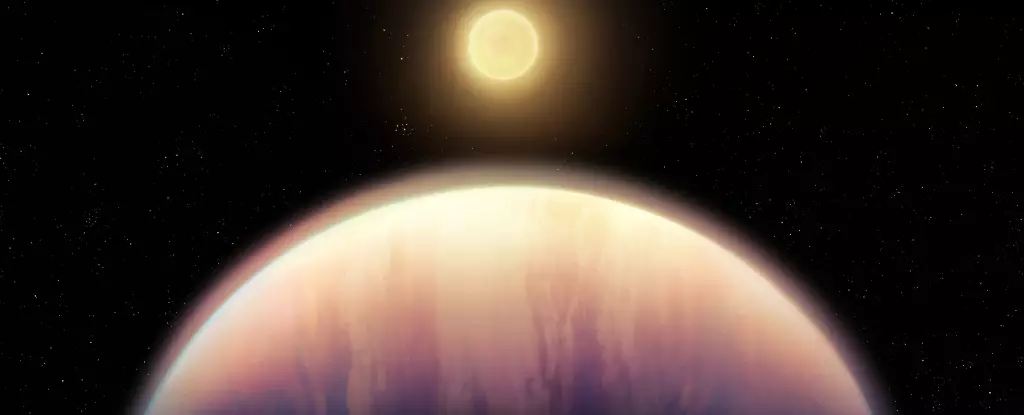The James Webb Space Telescope (JWST) marks an extraordinary evolution in our quest to unlock the mysteries of the universe. As the most advanced space telescope ever devised, it surpasses its predecessors in capability, ushering in a new golden age for astronomical discovery. One of its most significant contributions has been its ability to explore the intricacies of exoplanet atmospheres, laying the groundwork for unparalleled advancements in our understanding of planetary systems far beyond our own.
Through the utilization of its state-of-the-art technology, JWST allows scientists to observe light from host stars as it penetrates the gaseous envelopes of orbiting exoplanets. This innovative method provides a glimpse into the chemical compositions of these distant worlds. Among its astonishing discoveries, JWST recently tackled the challenging atmospheres of gas giants in the HR 8799 system, located a staggering 130 light-years away. Here, researchers detected the presence of carbon dioxide, a significant indicator of the planets’ formation processes, and perhaps a key to understanding planetary evolution across the cosmos.
The HR 8799 Exoplanetary System
HR 8799 is no ordinary star system; it’s a captivating display of cosmic architecture that captivates astronomers and enthusiasts alike. With a young, luminous star at its center, boasting a mass 1.5 times that of the Sun and an age of approximately 30 million years, this system serves as a fascinating laboratory for studying planetary formation. HR 8799 is home to four massive gas giants—designated HR 8799 b, c, d, and e—each ranging from 5 to 10 times the mass of Jupiter. While unique in their own rights, these planets hold a trove of insights into how planetary systems can evolve from a protoplanetary disk.
What makes the HR 8799 system particularly compelling is that it represents one of the first multiple-planet systems to be directly imaged, offering a rare opportunity to study planetary dynamics in a context that is visually accessible and analytically feasible. The distances of these gas giants from their parent star vary from 15 to a remarkable 70 astronomical units, allowing astronomers to grasp the immense spatial scale and gravity dynamics that regulate their orbits.
Unraveling the Formation Processes
The formation processes of gas giants such as those in HR 8799 can unfold through two primary theories: core accretion and disk instability. Core accretion, which posits that solid cores attract surrounding gases from a protoplanetary disk, is thought to have shaped not only Jupiter and Saturn in our Solar System but also likely the planets within HR 8799. On the other hand, disk instability suggests that rapid clumping of gas particles leads to the formation of planets, an intriguing theory that challenges traditional notions of planetary evolution and formation.
Recent analyses have leaned heavily toward supporting the core accretion model for HR 8799, bolstered by findings that these planets contain higher-than-expected concentrations of heavy elements. This research, led by a talented team from Johns Hopkins University under the direction of William Balmer, delves deeply into the atmospheric compositions and structural formation of gas giants. Balmer articulates the objective of this research perfectly, stating that understanding these systems helps contextualize our own existence and, by extension, our understanding of life as we know it.
The Role of Spectroscopy in Discovery
The JWST employs advanced NIRCam technology, including coronagraphs designed to block out the overwhelming brightness of stars, enabling detailed spectroscopic analysis of planets. This innovative approach has permitted scientists to characterize specific wavelengths produced by various gases and deduce their concentrations, offering insights that were previously beyond reach. Although nearly 6,000 exoplanets have been discovered, direct imaging remains a significant challenge, making the JWST’s findings all the more pertinent.
The recent observations of HR 8799 and the 51 Eridani system, conducted under Webb’s Guaranteed Time Observations, are critical in re-envisioning our celestial neighborhood. As JWST continues its mission, it not only charts distant worlds but also enhances our understanding of the origins and structures of the Universe itself. This pursuit reaffirms humanity’s timeless fascination with the cosmos and serves as a testament to what we can achieve through perseverance, scientific inquiry, and technological advancement.

